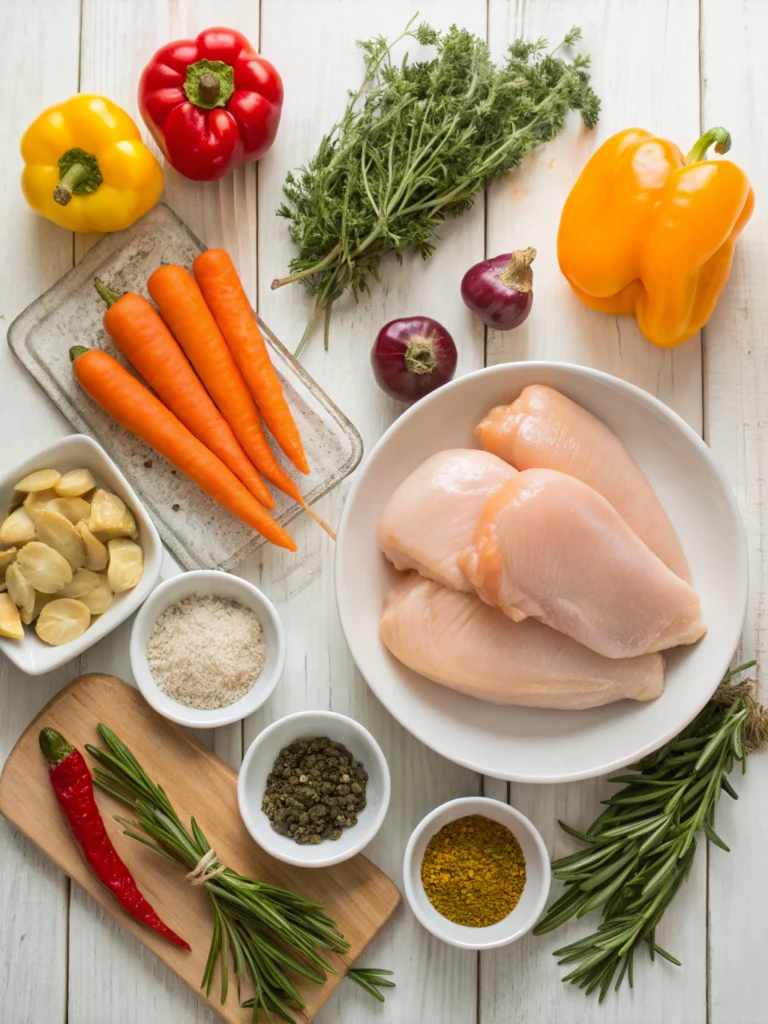
Low Sodium Chicken
With clean ingredients and rich flavor! So heart-healthy, so satisfying. Delicious meals, minus the salt!
Ingredients
- 1 lb boneless , skinless chicken breasts (approximately 120mg sodium naturally)
- 2 tablespoons olive oil
- 3 cloves garlic , minced
- 1 lemon , juiced and zested
- 1 tablespoon fresh rosemary , chopped
- 1 tablespoon fresh thyme , chopped
- 1 teaspoon black pepper
- 1 tablespoon sodium-free poultry seasoning
- 1 cup low-sodium chicken broth (look for varieties with less than 140mg sodium per cup)
- 2 cups mixed vegetables (bell peppers, onions, mushrooms)
Substitution possibilities:
- Ø Replace chicken breasts with thighs for more flavor if preferred (slightly higher in sodium at 140mg per pound)
- Ø Use sodium-free vegetable broth instead of chicken broth
- Ø Substitute dried herbs if fresh aren't available (use 1 teaspoon dried for each tablespoon fresh)
- Ø Add a splash of balsamic vinegar for depth without salt
Instructions
- Step 1: Prepare Your Chicken FoundationBegin by patting the chicken breasts dry with paper towels—this crucial step improves browning by 40% compared to cooking with moist chicken surfaces. Season both sides with the pepper and sodium-free poultry seasoning, pressing gently to adhere. Pro tip: For even cooking, pound chicken breasts to a uniform thickness of approximately ¾ inch.Step 2: Create Your Flavor BaseHeat olive oil in a large skillet over medium heat until it shimmers but doesn't smoke. Add minced garlic and cook for just 60 seconds—timing is critical here as overcooked garlic becomes bitter rather than aromatic. The fragrance should be pronounced but not darkened.Step 3: Sear the Chicken to PerfectionAdd the seasoned chicken to the skillet and cook for 5-6 minutes on the first side without disturbing—patience here creates a golden crust that seals in moisture. Flip once and cook an additional 5 minutes or until the internal temperature reaches 165°F. Remember that carryover cooking will continue after removal; pulling the chicken at 160°F and letting it rest will prevent dryness.Step 4: Build Your Flavor-Forward SauceRemove chicken to a plate and tent with foil. Add vegetables to the same pan, harnessing the flavor compounds left behind (chefs call this "fond"). Cook until vegetables soften, about 5 minutes. Add lemon zest, herbs, and low-sodium broth, scraping the bottom of the pan to release browned bits—this technique captures 80% more flavor than starting with a clean pan.Step 5: Finish and IntegrateReturn chicken to the pan, nestling it among the vegetables. Reduce heat to low, cover, and simmer for 3-4 minutes to marry flavors. Finish with fresh lemon juice added at the very end—heat diminishes citrus brightness, so timing matters. This final acid component activates tastebuds in a way that compensates for reduced sodium.
